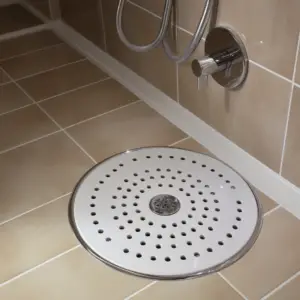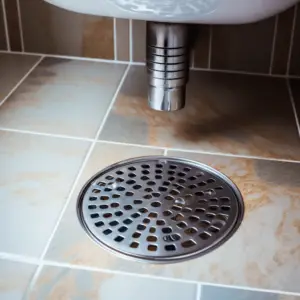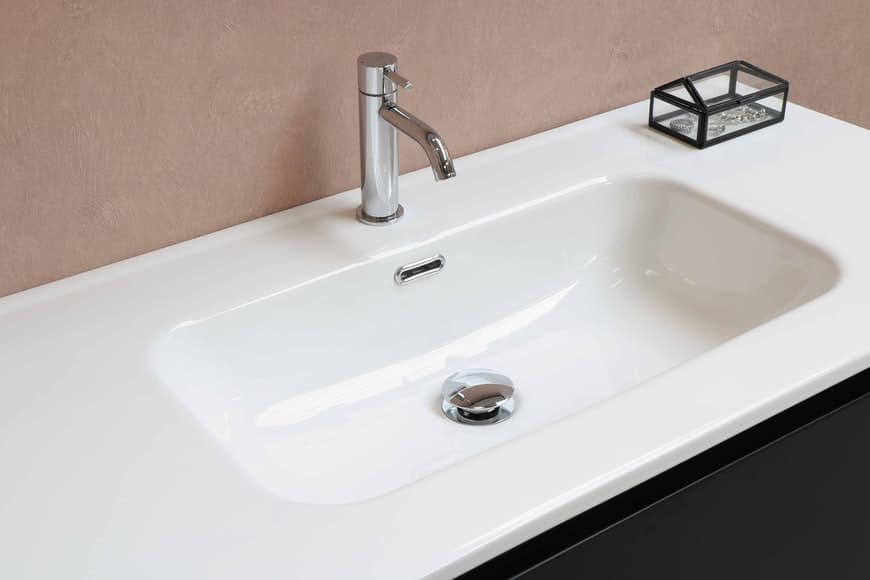Do you often wonder if you can set up a shower and sink to share the same drain? Apparently, it’s not just you facing this issue.
Besides, if you have been experiencing problems with your bath, you will get insights into solving them.
When the shower and sink use the same drainage, you will probably face bath gurgling, which is irritating.
The gurgling sound is created when the drainage pipes get clogged. You probably would not wish to hear such sounds every time you wake up.
Various issues would arise when the shower and sink share the same drain. But before we get there, you may want to know the factors to consider when you intend to set up both to share the same drain.
Table of Contents
Can a Shower and Sink Share a Drain: Factors to Consider

The sink and shower can share the same drain. However, you will need to put in mind a few aspects that will help you achieve it. These are the main considerations when you want your shower and sink to share the same drain.
- Bathroom’s Layout
Most people underrate this component when setting up shower and sink drains. However, you should always ensure the bathroom’s layout allows this type of setup. In some cases, the two fixtures will not be close to each other. Thus, it would be somehow impossible to link the two to share the same drain.
- Placement of the Vent
The vent placement is yet another critical aspect to consider when you want your shower and sink to use the same drain.
It would be possible for both to use the same drain if the two fixtures are five feet close to each other. If that is the case, you can easily use a vent to connect the two. Ideally, the vent will make the setup work. Otherwise, it will not be possible.
- Spacing
Spacing is a very crucial factor when it comes to shower and sink drainage setup.
They should both be close to each other. You just need to know that the space between the sink and shower is sufficient to have both of them share a drain.
Issues that Might Arise when Sink and Shower Share the Same Drain
Truly, you can set up the shower and sink to use the same drainage system. However, the process would demand proper planning and mapping of the pipelines.
If it is done wrongly, you will soon experience problems that are quite costly to fix. Take a look at the issues that you may experience.
Blockage
It is usually an irritating moment when you see bath or sink water coming out. This result could be a result of the bath, sink, or toilet outlets being linked to one drainage pipe.
Thus, you may have to think twice, especially if you intend to connect the shower and sink to the same drain. It would not be easy to unclog the main pipe.
In some cases, dirt and hair mix with soap and stick to the drainpipe walls. If the sink and shower drain systems are linked, you may experience clogging. The flow of drained water will be compromised. This will cause a foul smell and even damage to electrical fittings.
Bath Gurgling
If the sink drain is connected to the shower drain pipes, you will probably experience bath gurgling. These sounds are not normal. This is caused by hairballs that clog the drain.
Typically, you will hear the sound of water burping out of the bath whenever you empty the sink. You can contact a professional plumber to figure out where the clog has occurred and correct it to solve this issue.
Airlocks
Water may flow out of the sink or shower with less pressure. This could be caused by airlocks formed in the drainage area. The air bubbles get trapped in the main pipe, and this will limit water flow.
When you connect sink and water drain pipes, the water pressure inside the main pipe increases. Due to the water rush from the two outlets, air pockets form in the higher point of the main pipe.
You can fix this issue by inserting air release valves that auto-open to release the air out. The valve will auto-close when the air is completely released from the pipe.
Slow Drains

Many sinks and baths experience a major problem-sluggish drain! If your bath is small, most plumbers will link both drainage pipes. Consequently, if the venting is not properly done, a lot of waste might be trapped in the P-traps.
Water will drain out slowly if the P-traps are partially clogged. But if it is entirely clogged, the water overflows instead of flowing into the main drainage pipe. But you can utilize a plunger to create pressure and also loosen the clogs.
Fatberg
A Fatberg is formed in the main pipeline when wastewater is being drained. A Fatberg is a huge fat globule formed when fats, oil, grease, and other soft waste combine in the drainage system. All these bergs accumulate in the waste pipes and solidify to form the fatberg. This berg can easily clog the main drain pipe.
If both drain pipes are linked together, fatberg formation and accumulation will occur at an increasing rate. Thus, the pipes will constantly get clogged. But you can still get rid of the bergs by pouring some vinegar and very hot water into the drainpipe.
Conclusion
You have known that it is possible to connect shower and sink drain pipes. However, you will need to ensure that there is enough space, the venting is done correctly, and the bath design allows you to connect them.
Various problems may arise from the setup. But the good news is that all the issues such as fatbergs, gurgling sounds, slow drains, and blockage can be addressed.
However, it would be great to plan well, set it up perfectly, and involve professionals in the entire project.
This will ensure that you will not experience any problems that might require expensive fixes. If you decide to DIY the project, you can still research extensively before setting it up to avoid complications.


